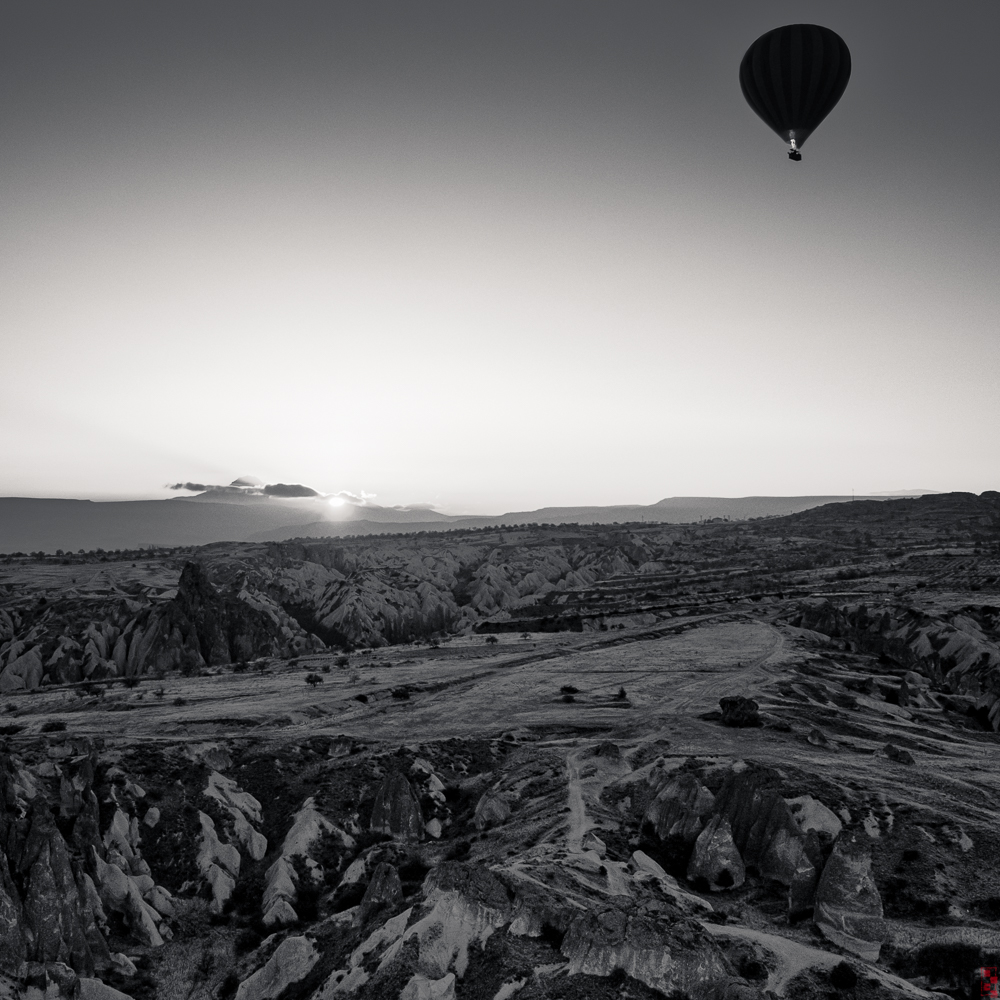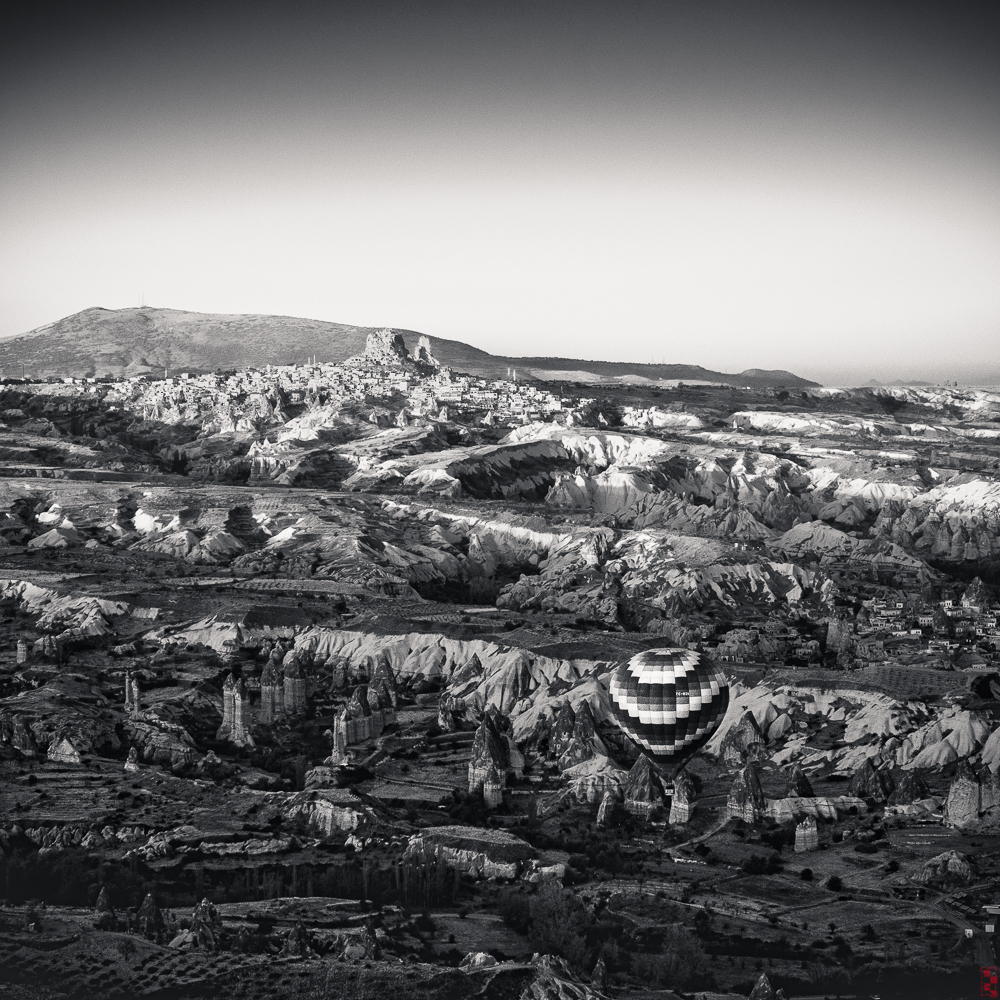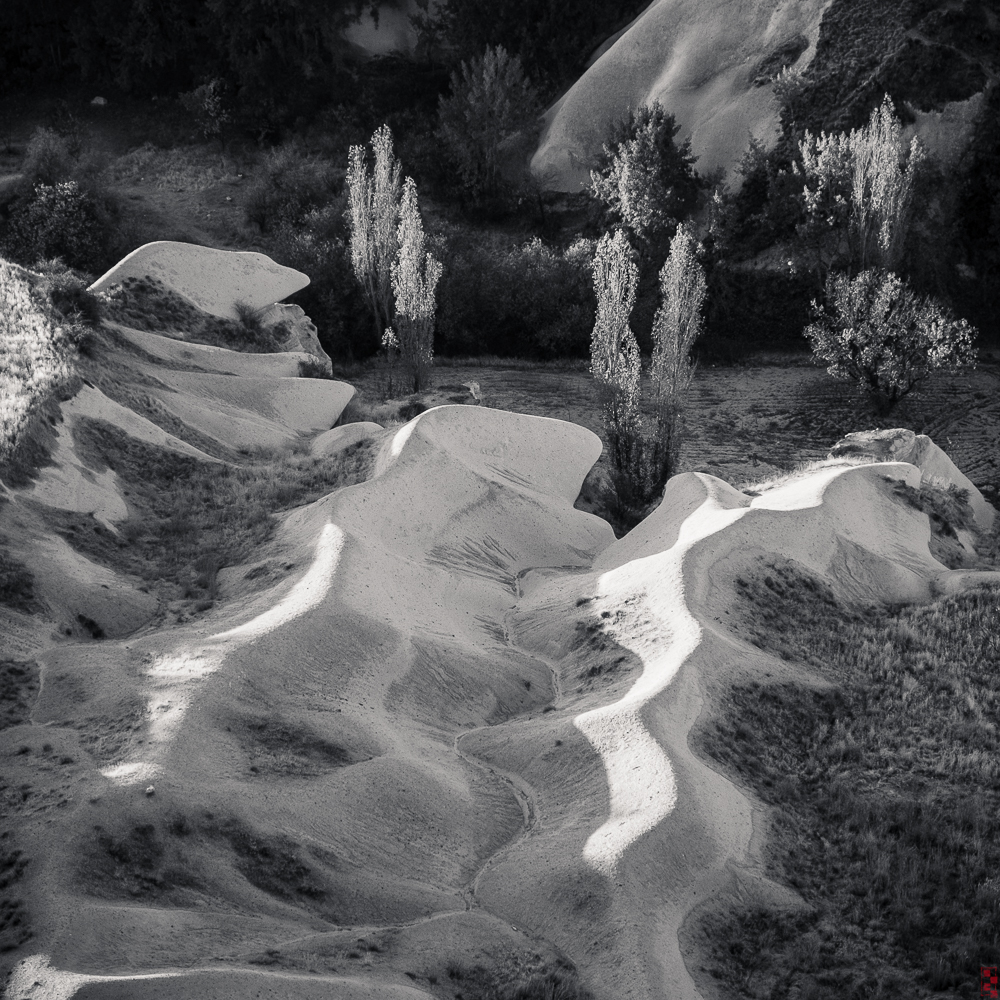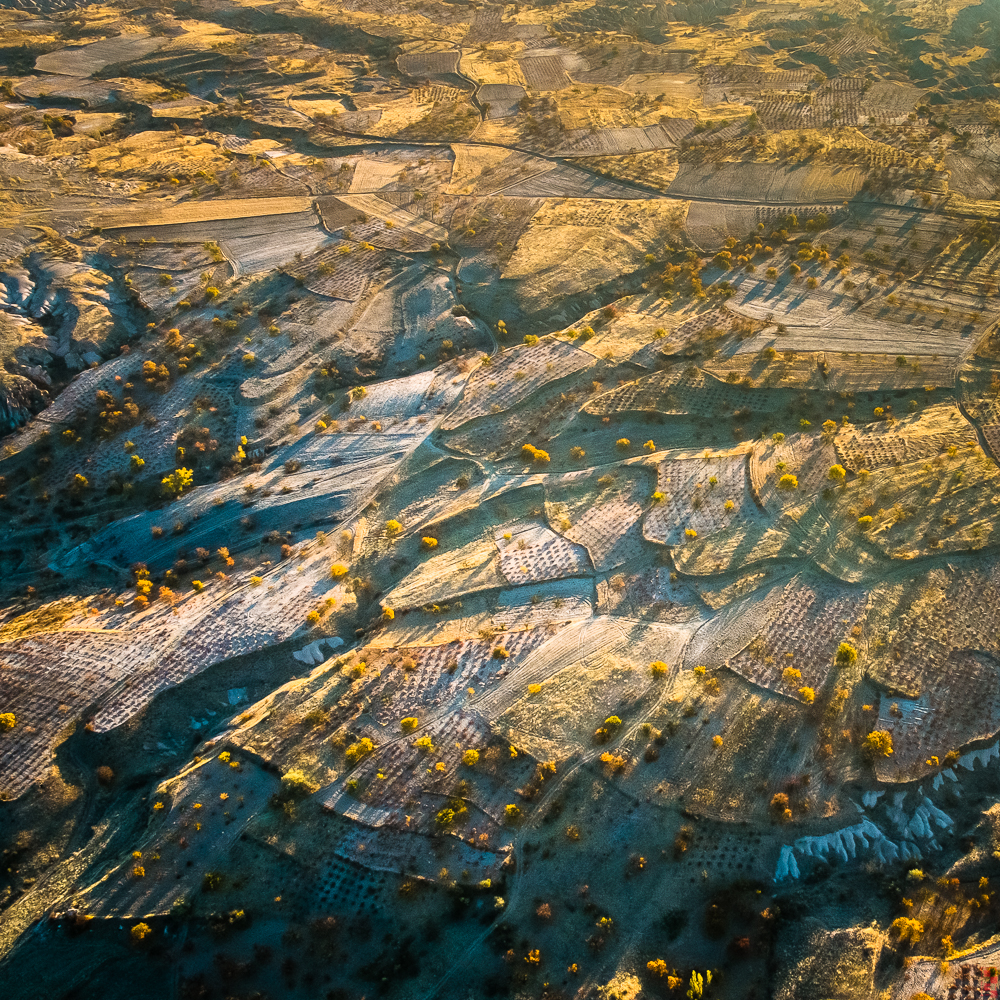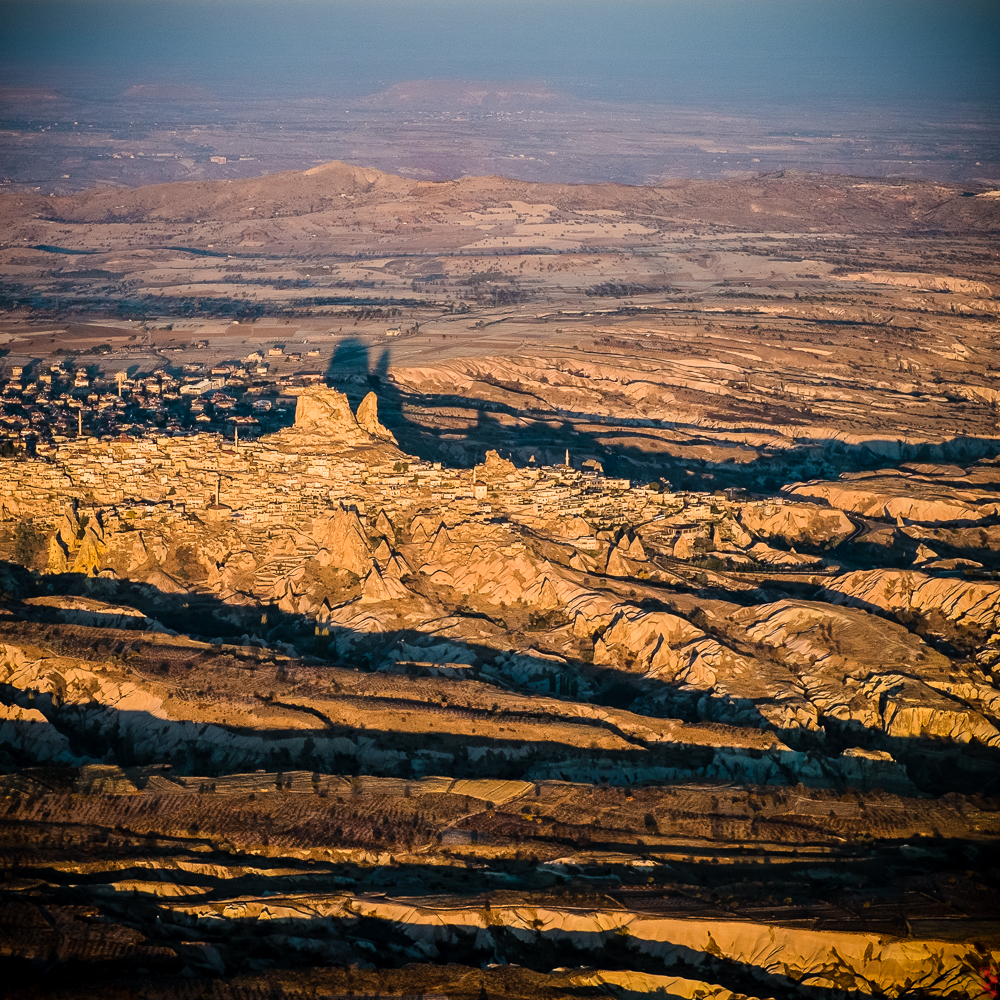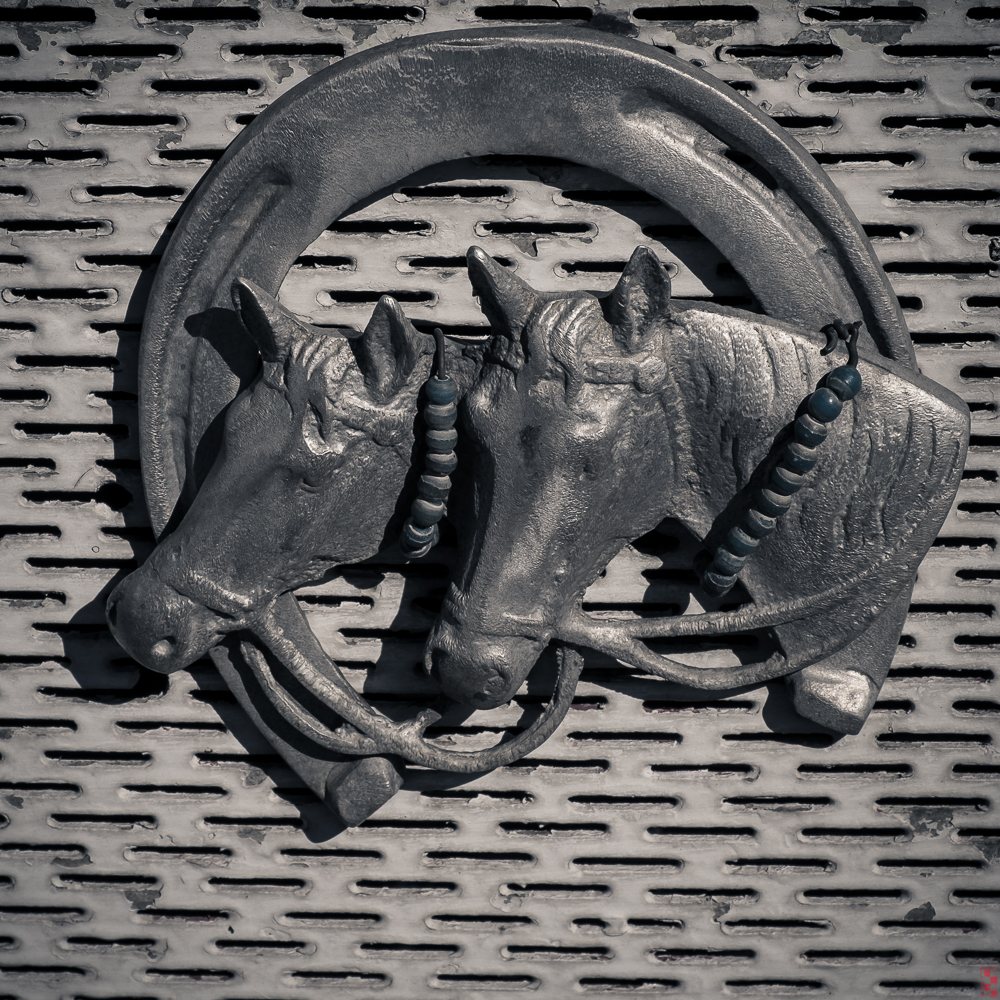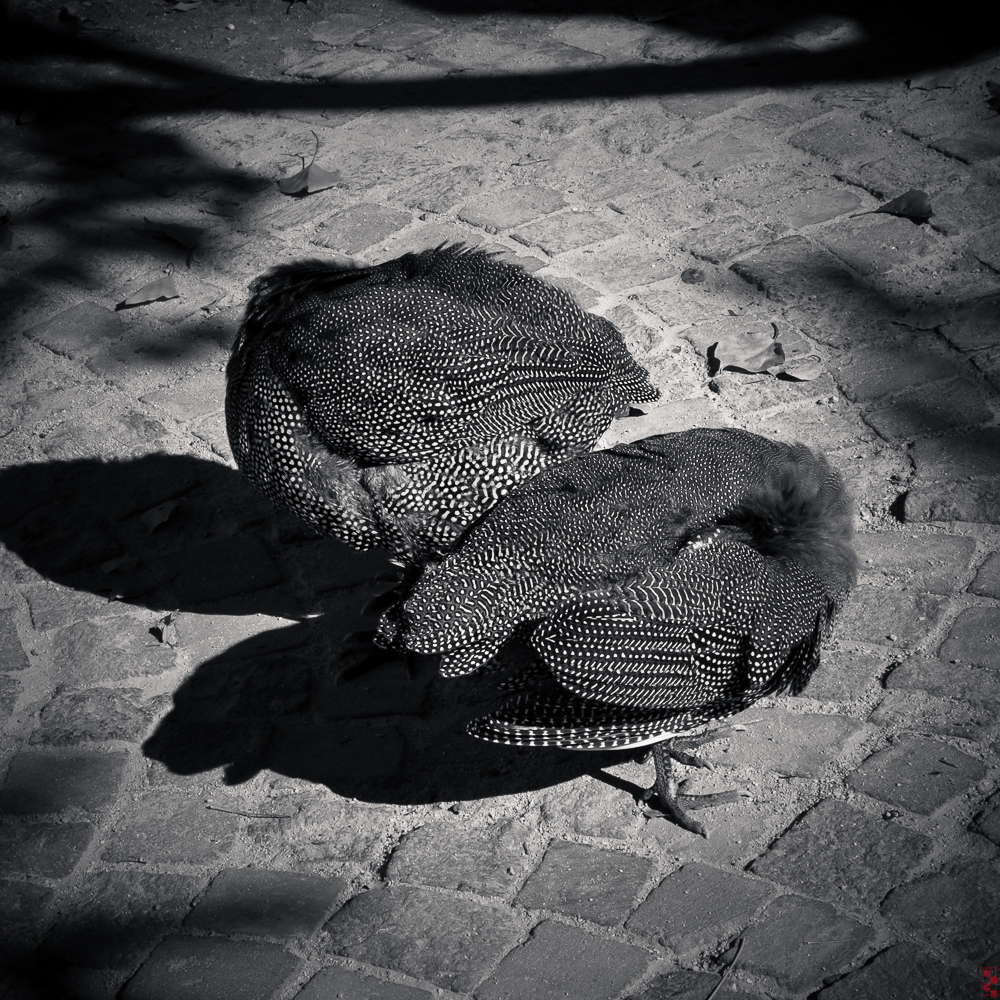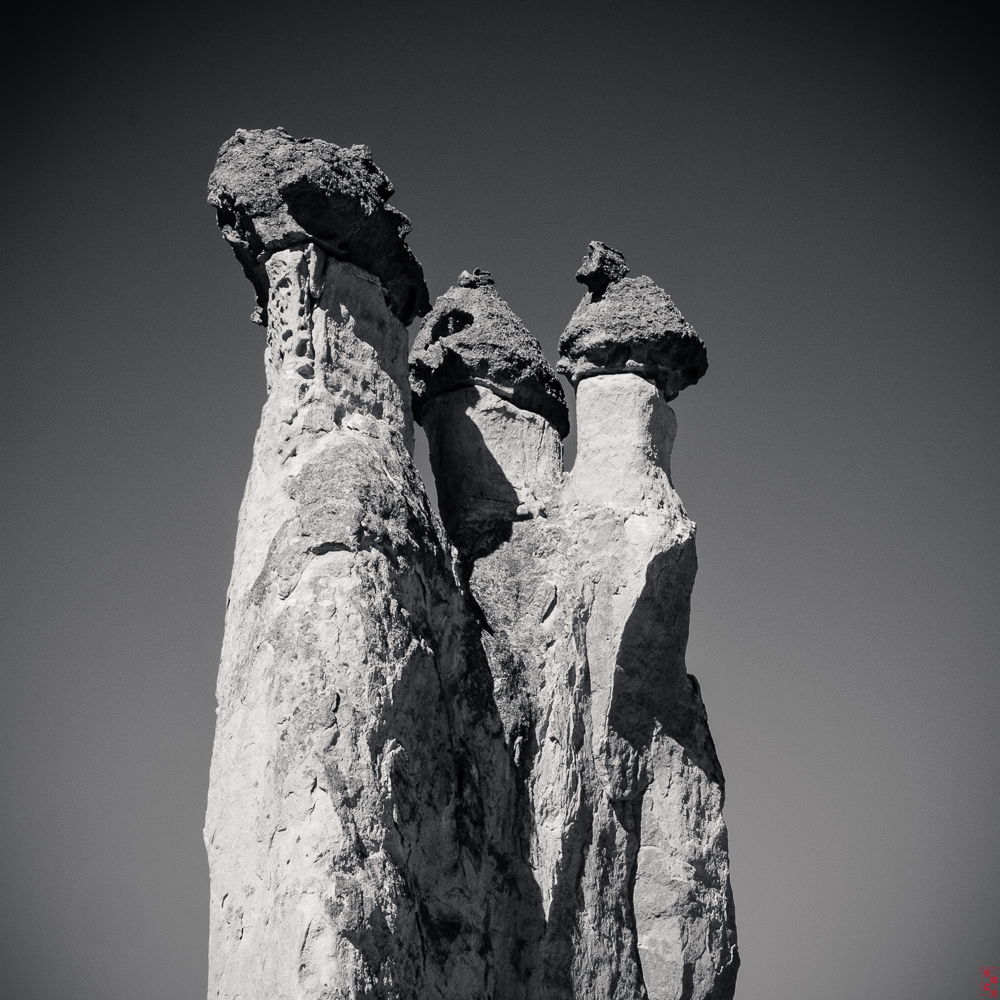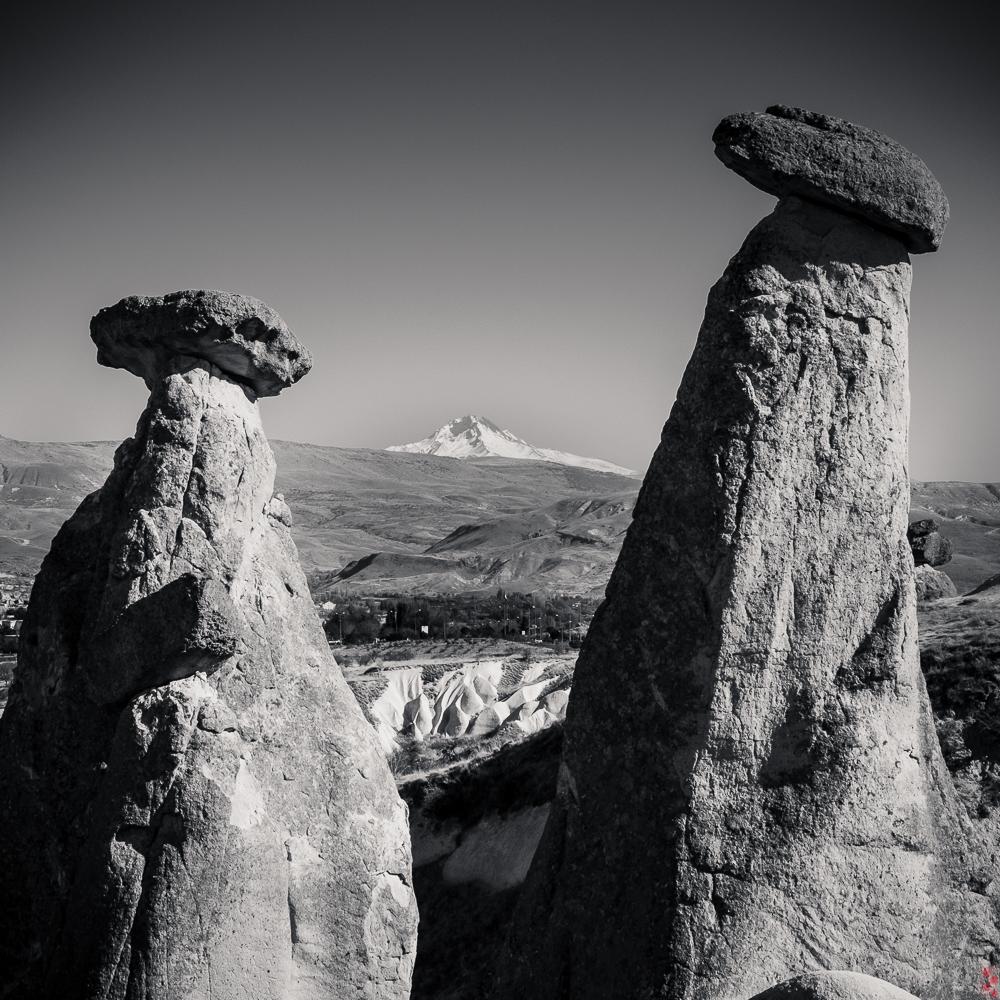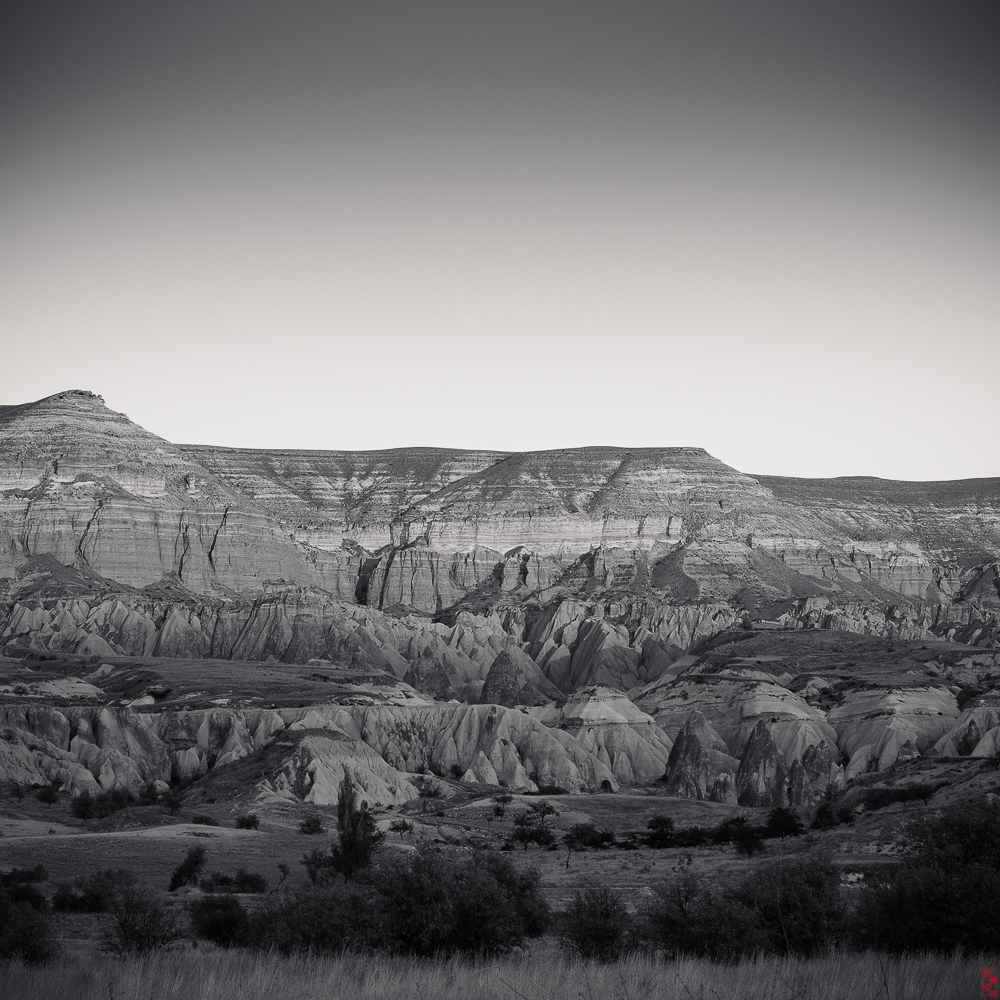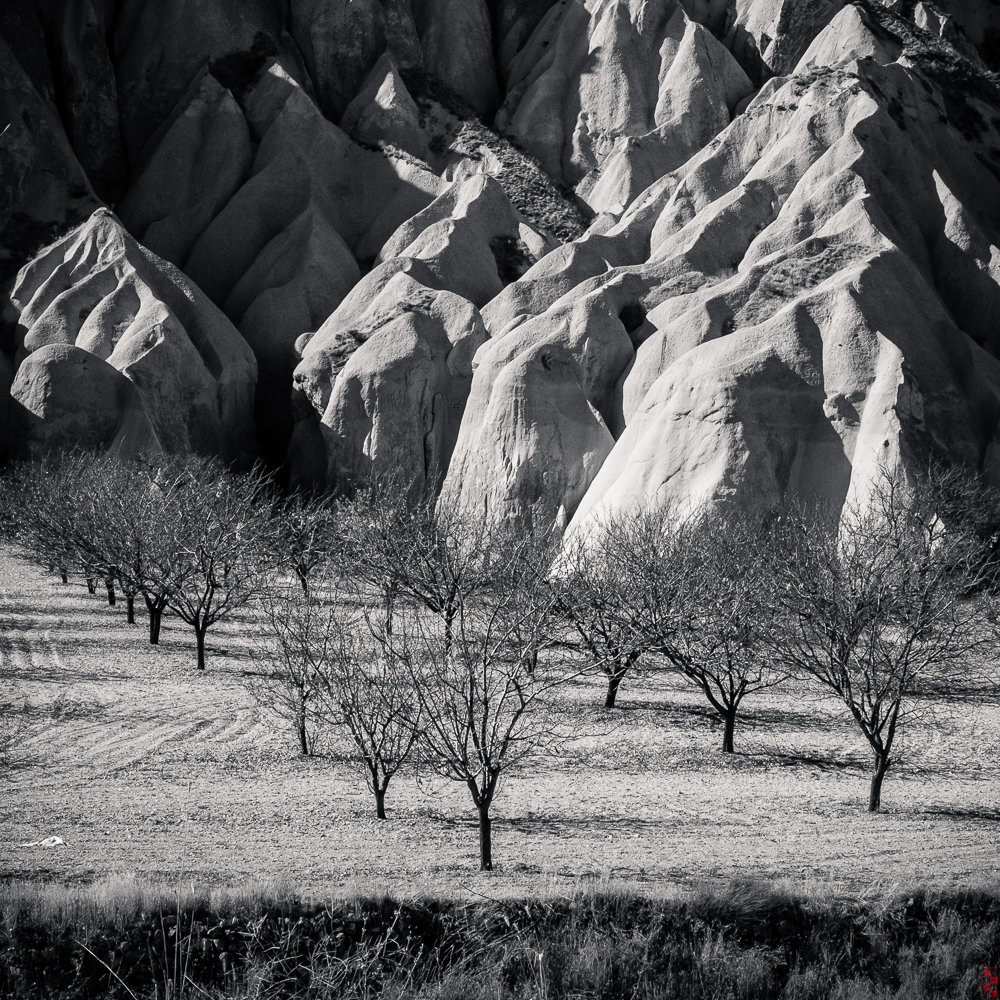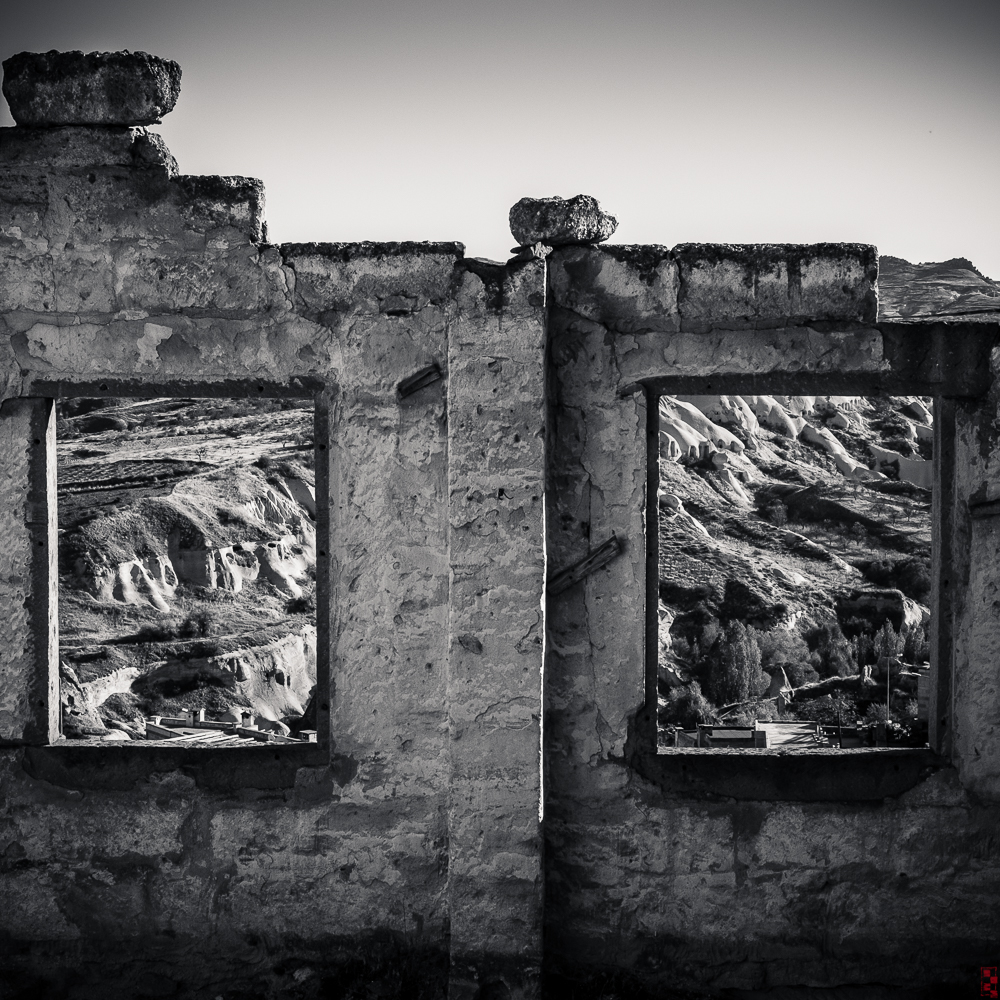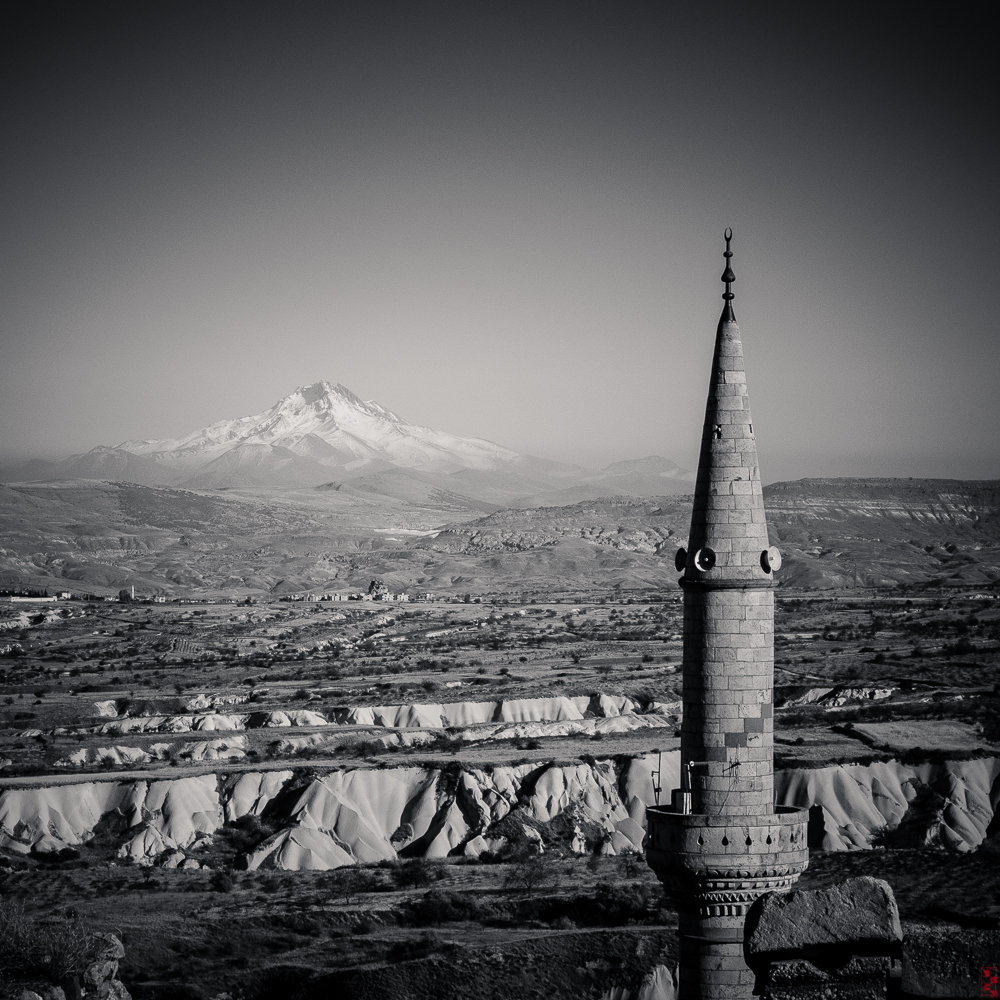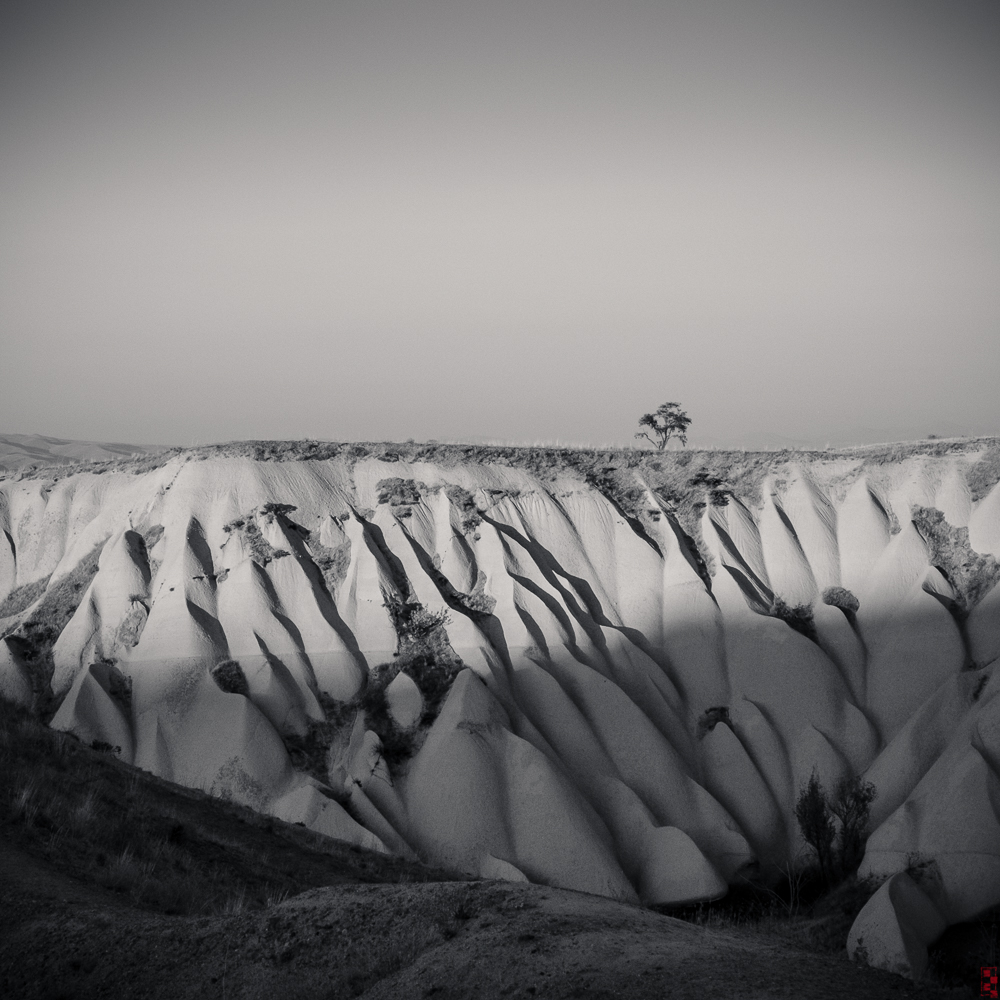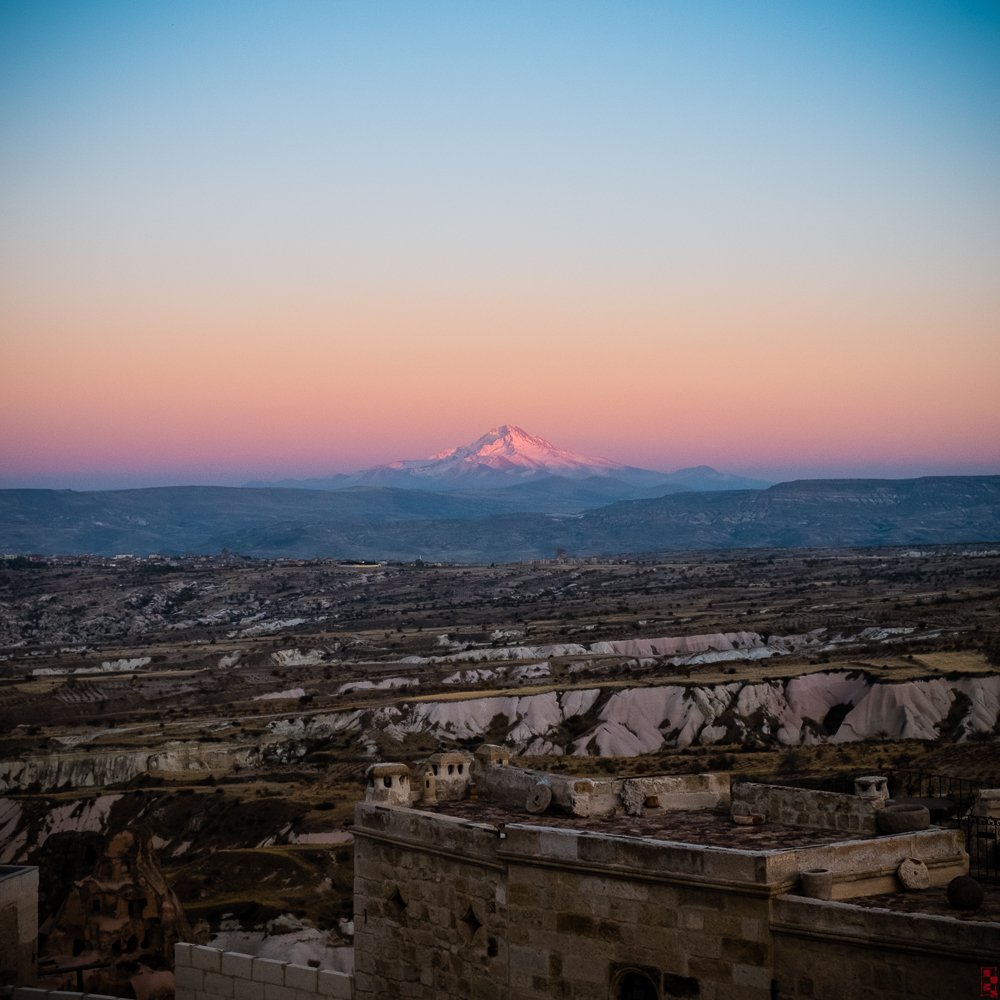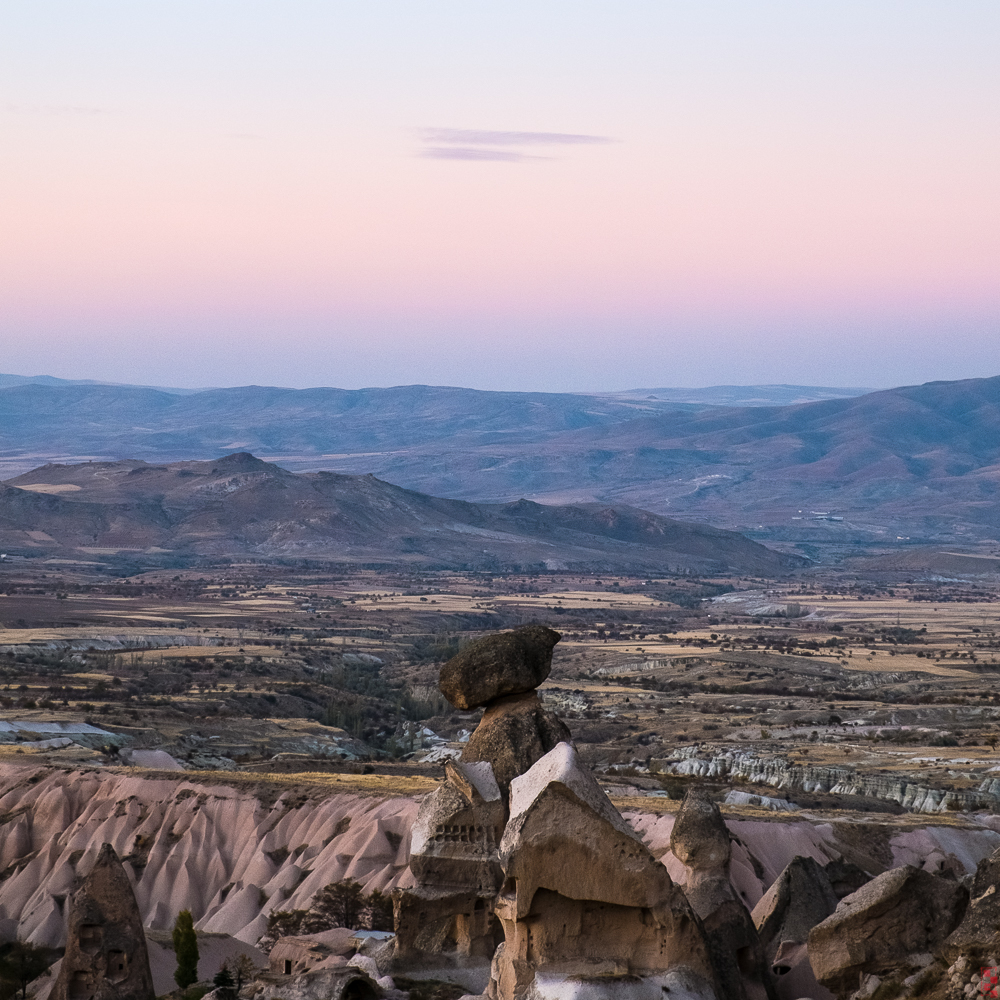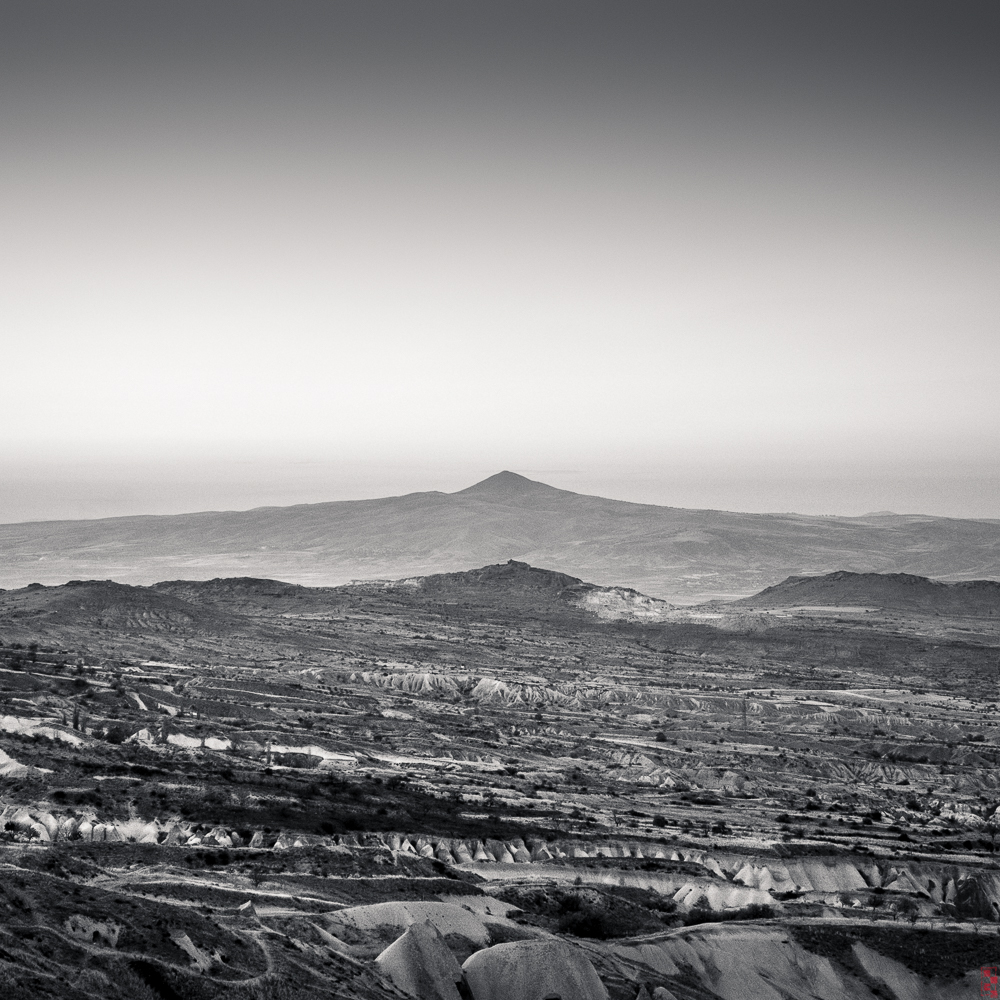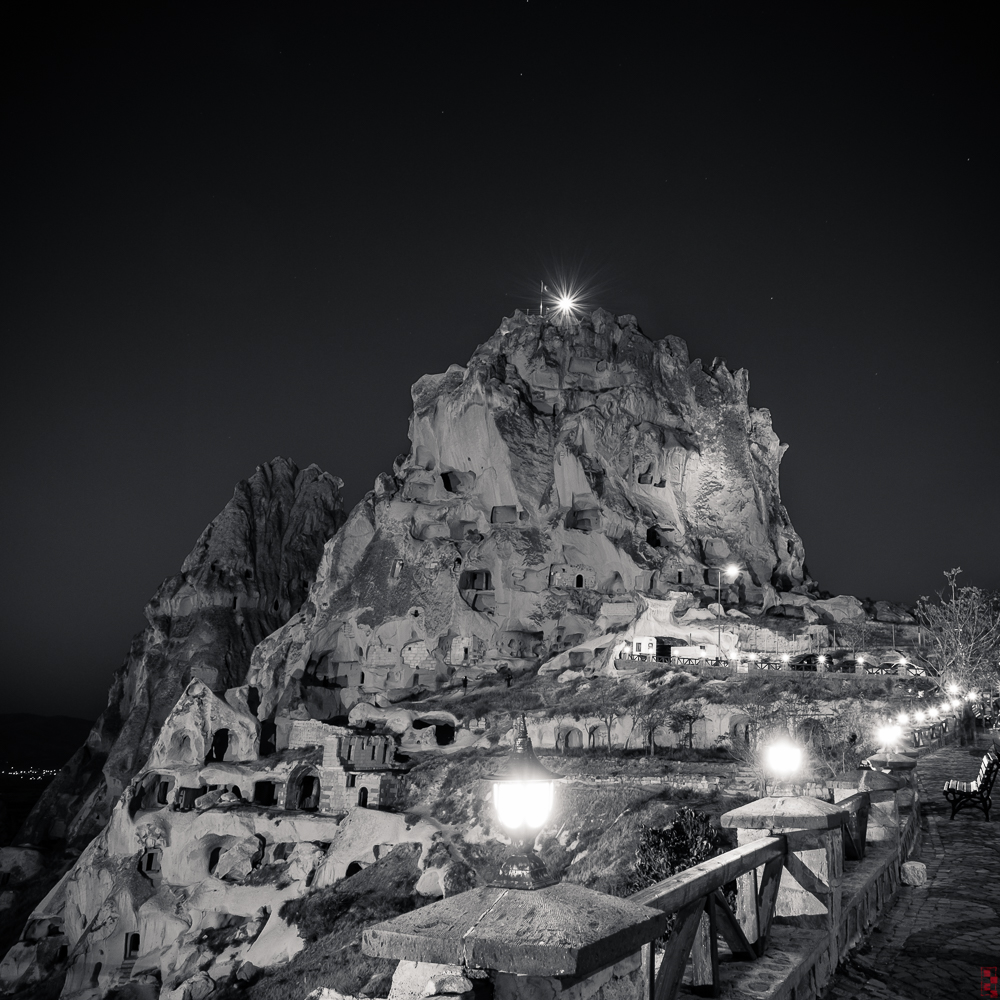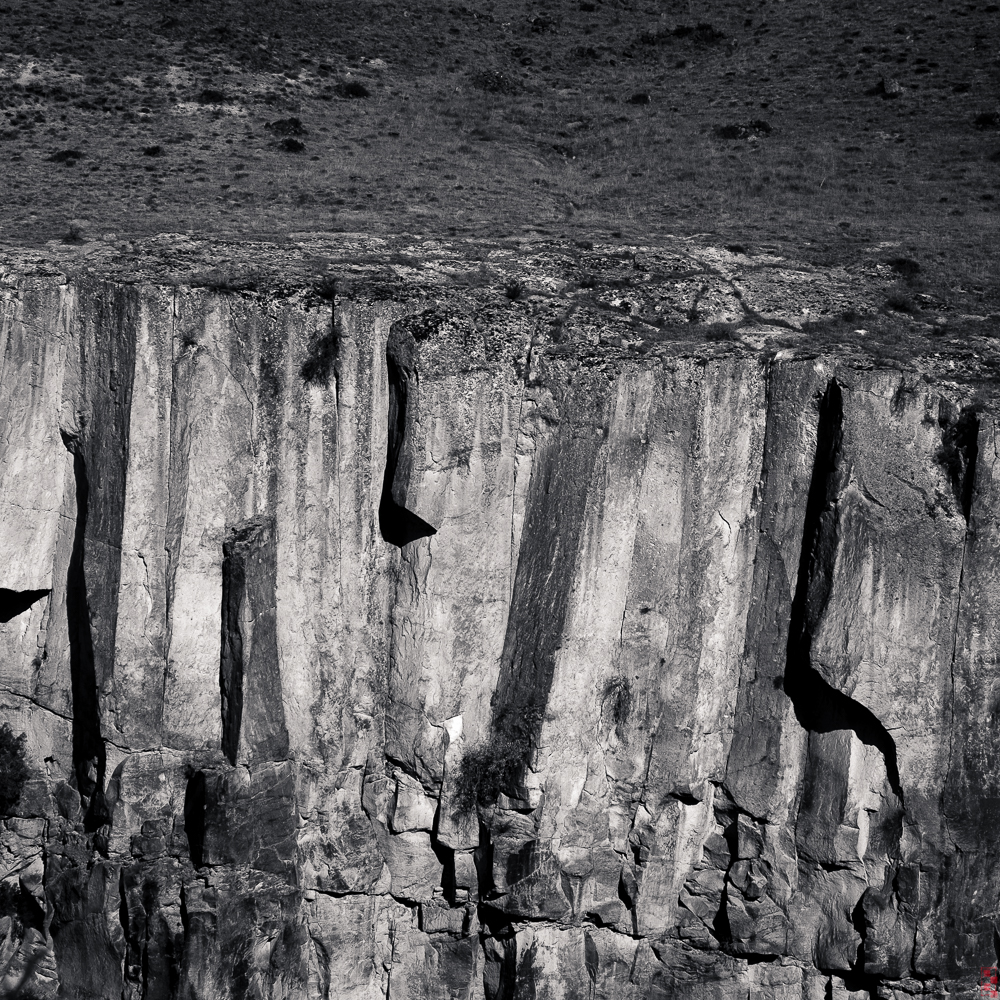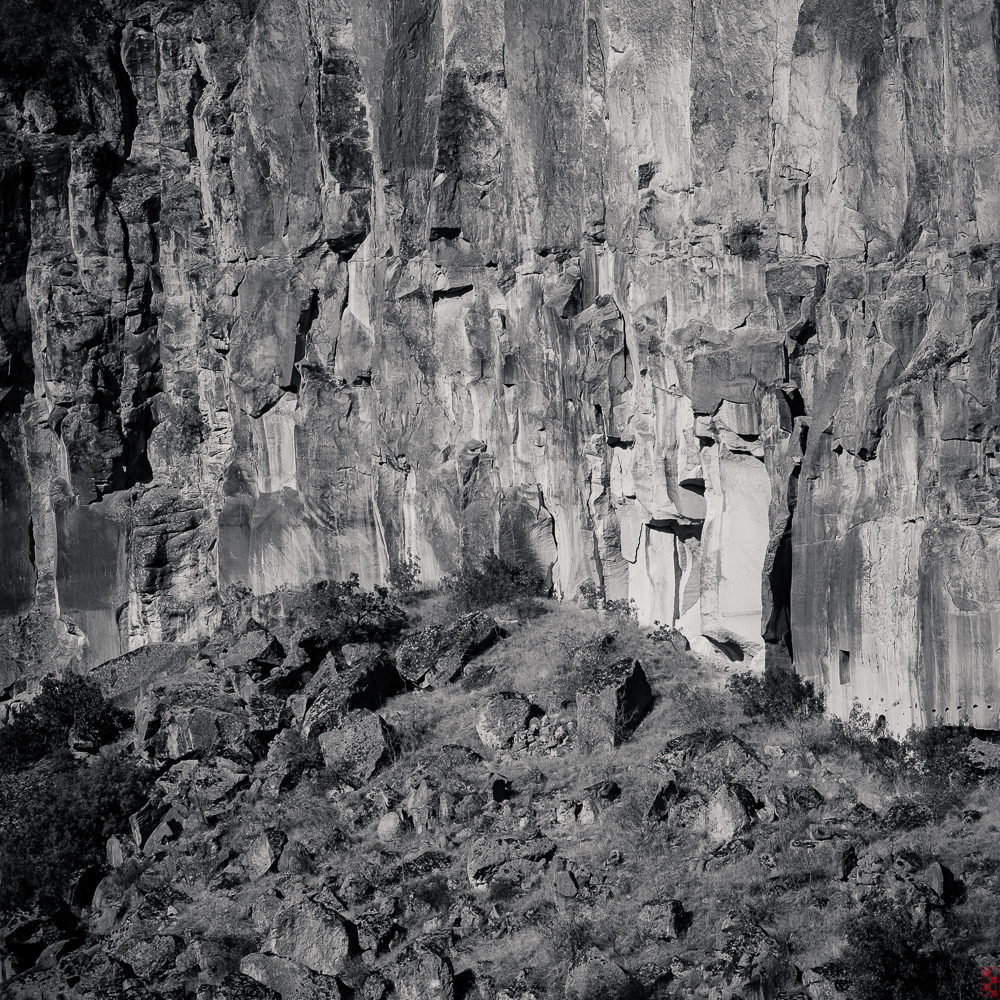One fine Saturday last December, I went to Pamukkale for a day trip. It is a shot flight from Istanbul, and since there is not much to see besides the famous travertines, and the archeological remains of Hieropolis, I returned the same evening.
The treventines are formed by the dissolved carbonite minerals in the waters of the hot springs in the area. As they flow and evaporate, they leave the minerals behind in the form of steps or shelves with raised brims, and brilliant blue water pools on top of the shelves. This formations are not unique to Pamukkale, but they are at a larger scale than the other ones that I know of.
The minerals are a blindingly white when they are first deposited but they need to be continually renewed to keep them that way. Instead of letting the nature to take its course, the water is managed, and diverted to different areas of the site according to some scheme. I think the result can be accurately described as the biggest and longest-running art installation in the world.
The travertines are formed on the SW side of a low hill or plateau, and the archeological site of Hierapolis is on top of the hill. I haven't toured the archeaological site as it is several kilometers in extent, but from a distance I could see that there are some impressive remains of buildings, including an theater.
On top of the hill there is also large public pool fed from the same hot springs, and a number of tourists seemed to be enjoying a soak. Alternatively, you can walk on a designated section of the travertines, and splash in the shallow pools there.
As for photography, I took some photos of travertines, of course, but as luck would have it, the photogenic blue pools of water were only visible in a relatively distant part of the site. So I spent quite a bit of time photographing the tourists. I also took a lot of out-of-focus photos of groups of figures, as a instead semi-abstract experiment. When really oof, the figures turn into a gesture drawing with recognizable but highly stylized shapes. An acquired taste maybe, but I like the results.




